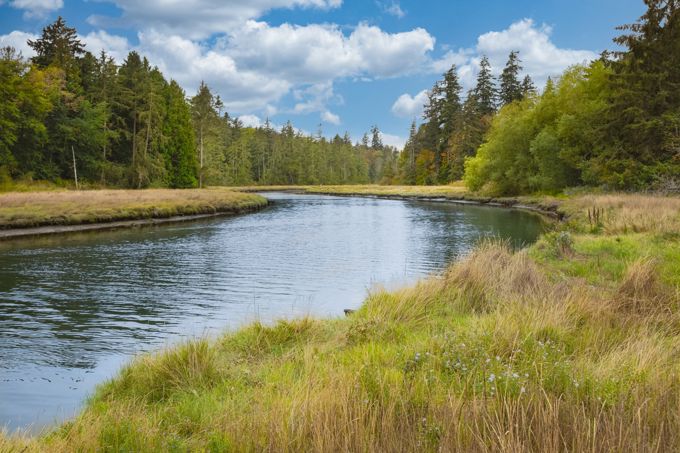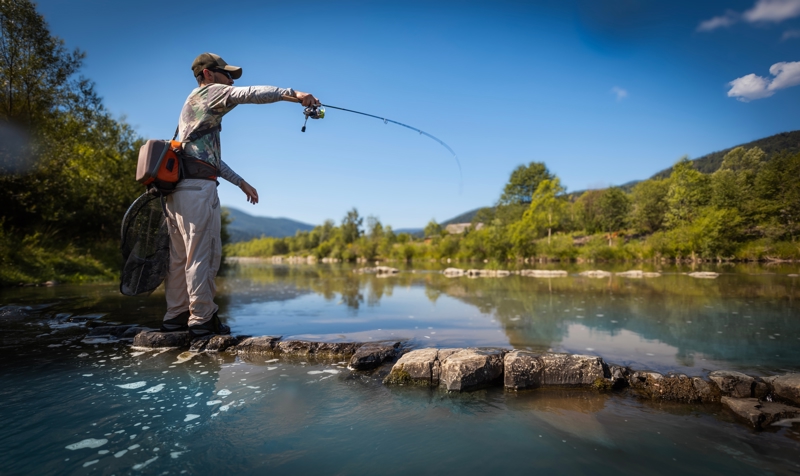
How Do Littoral Zones Differ from Riparian Zones?
If your real estate includes areas that the Federal government or state of Virginia designate as littoral or riparian zones, the options to alter your land can be severely limited. At minimum, you’ll need to follow strict legal processes to avoid fines and expensive litigation.
If you’re concerned about the impact of these regulations on your property, we encourage you to connect with an experienced Virginia littoral / riparian attorney. Qualified property owners receive a free consultation - including recommended next steps based on your specific situation.
Speaking with an experienced attorney is far better than a quick google search - especially considering that many of the results on Google related to littoral and riparian zones are poorly written, lack context, or are sometimes flat out wrong.
Here’s the information on Virginia water rights you need to understand:
Riparian Definition
A Riparian Zone is the area in a waterway where the owner of waterfront real estate enjoys riparian property rights. Click here to learn more about the Riparian Zone and here for a deep dive into the five riparian property rights. The term "riparian" specifically relates to geography located on the bank of a natural watercourse, such as a river, stream, lake or a tidewater in certain instances.
These areas are important ecological resources because the persistent presence of moving water creates the distinct soil characteristics needed for plants and animals that thrive in moist environments - which are becoming increasingly endangered (more on this in a moment).
Littoral Definition
Littoral refers to land that borders pooled or stationary bodies of water. This can include oceans, bays, lakes or ponds.
The key factor is whether the body of water is considered stationary or transitory. This isn’t always a black and white issue. Even different judicial rulings related to littoral and riparian zones provide different interpretations.
Clicking the link in the above paragraph will take you to another article I wrote on the subject, including examples of specific legal cases where different parts of the judicial system did their best to define these loosely held standards.

Shuterstock: Rocksweeper
Why are these waterfront zones so crucial to Virginia’s ecosystem?
The benefits of preserving Riparian and Littoral Zones in Virginia include:
-
Habitat provision: They support a high diversity of plant and animal species.
-
Water quality: Riparian vegetation helps filter pollutants and sediment from runoff, improving water quality.
-
Erosion control: The plants and their root systems stabilize banks and reduce the impact of floods.
-
Temperature regulation: Overhanging vegetation provides shade, keeping water temperatures cooler, which is crucial for aquatic life.
Riparian vs. Littoral Rights
As I mentioned previously - Riparian refers to land bordering flowing water, while Littoral refers to land along bodies of water that are more stationary in nature.
While the terms "littoral rights" and "riparian rights" are sometimes used interchangeably, the technical distinction is important due to the nuances of property ownership and associated rights.
Here's a breakdown of what "littoral" implies for Virginia waterfront property:
Ownership Extent: In Virginia, generally, the limits of land bordering bays, rivers, creeks, and the shores of the sea extend to the mean low-water mark. This means that the private landowner owns the land up to this point, while the land channelward of the mean low-water mark (the submerged bottomlands) is typically owned by the Commonwealth of Virginia under the Public Trust Doctrine.
Rights and Privileges: Owners of littoral property in Virginia have certain rights, often referred to as "littoral rights" (or sometimes broadly as "riparian rights" in legal discussions, though the distinction is technically present). These generally include:
-
The right to enjoy the natural advantages conferred by the adjacency to the water, such as views.
-
The right of access to the water.
-
The right to build structures like piers or docks out to the navigable part of the water, subject to state regulations and permits from the Virginia Marine Resources Commission (VMRC).
-
The right to accretion (the gradual increase of land due to natural deposits) and reliction (the gradual recession of water, exposing more land).
-
The right to make reasonable use of the water.
Public Trust Doctrine: A significant aspect in Virginia is the Public Trust Doctrine, which dictates that the state holds the submerged lands (beyond the mean low-water mark) in trust for the public for uses like navigation and fishing. This means that even with littoral rights, landowners often need permits from the VMRC to build structures or make changes on the state-owned bottomlands.
So, how do riparian water rights differ from the above language surrounding littoral rights?
While the Virginia Supreme Court has acknowledged the technical difference between the two terms, in a 2010 riparian water rights case they dictated that "riparian" is broadly defined as "of, relating to, or abutting any body of water."
This suggests that for many practical purposes, the rights themselves are largely similar, regardless of the specific term used.
One important distinction is when the courts are determining the rights associated with a privately owned pond or lake.
A body of water is considered privately owned when an individual or association owns all of the surrounding property. In these instances, the bottomland may be treated as private property.
Having claim to the bottomland of a privately owned lake or pond has a direct impact on a property owner’s ability to build piers or extend property lines through accretion.

Shutterstock: Edlosa Media
Three Examples of Littoral Zones in Virginia
-
Marshes - A marsh is an area of shallow-standing water, replete with smaller vegetation like grasses, reeds and sedges. This vegetation helps filter the water, prevent erosion and preserve biodiversity. Examples include tributaries of the Chesapeake Bay, like the Rappahannock River. On the other side of the barrier island you’ll find the Back Bay Wildlife Refuge in Virginia Beach.
-
Tidal Rivers - This is a great example of the grey boundary between littoral and riparian zones. Littoral zones include tidal waterways, which involve multiple sections of the Potomac River starting at Chain Bridge near McLean, Virginia.
-
Lakes - Lake Anna is a prominent example. It covers 13,000 acres in Virginia and is easily accessible from Charlottesville, Fredericksburg and Richmond. The 200 miles of shoreline include multiple littoral zones.
Our team has significant experience helping property owners in these regions, including littoral rights real estate cases.
Three Examples of Riparian Zones in Virginia
The James River Association offers an excellent guide to restoring riparian buffers, including the implementation of hardwood seedlings. One significant difference between marshes, which are generally littoral, and swamps which are generally riparian ecosystems, is that swamps have larger vegetation, like trees - marshes only have smaller vegetation, as we outlined earlier in this article.
Here are a few examples of Riparian Zones in Virginia:
-
Swamps - As mentioned above, swamps like The Great Dismal Swamp - bordered by Chesapeake, Norfolk and Suffolk - are excellent examples.
-
Riverbanks - Mathews County is an excellent example with a plethora of riverbank property along the Piankatank River, East River, North River and Ware River.
-
Floodplains - The Virginia Department of Conservation and Recreation identifies regions at risk of flooding. This map changes from time to time, so I highly recommend using their Virginia Flood Risk Information System to identify if your property could be impacted in the near future.
Leveraging Your Virginia Water Rights
As a property owner, you have both legal rights AND obligations which are dictated by the courts, the legislature and the governmental agencies responsible for maintaining our vibrant ecosystem. You benefit from this system, even though it can be restrictive, in the management of erosion controls and the enhancement of property values thanks to access to clean water and recreational opportunities.
With that being said, ignorance of the law is no defense. This means that if you intend to modify your land, or you’re concerned about proposed alterations by a neighboring property owner - you need to contact an experienced Virginia Water Rights attorney.
Don’t make the mistake of relying on a quick google search. If you want to stand on solid ground and achieve the outcomes you desire with minimal wasted effort, time and resources - we’re standing by to help! Take full advantage of our depth of experience in this niche area of the law.
